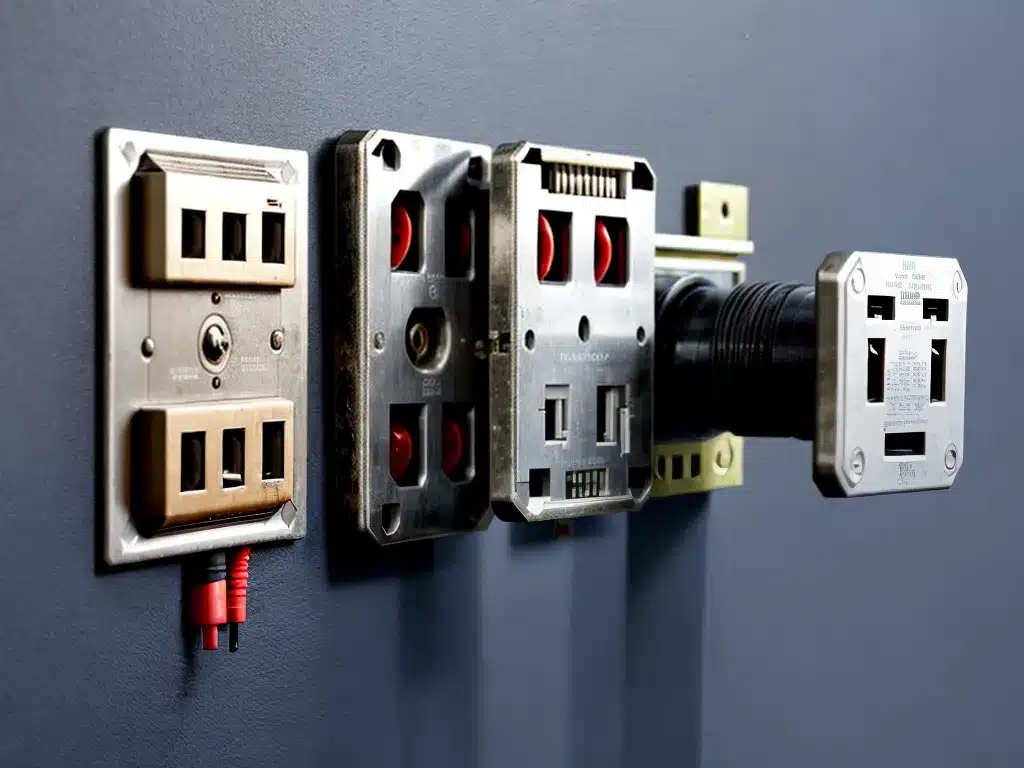
I often see people using universal sockets, those adapters that allow you to plug devices with different plug types into each other, in unsafe ways. As useful as these sockets are for connecting devices, using them improperly can lead to shocked users, damaged electronics, fires, and other dangers. In this article, I’ll cover the main risks of using universal sockets incorrectly and how to use them safely.
Shock Hazards
One of the biggest risks of universal sockets is the potential for electric shock. This can happen a few different ways:
Exposed conductive parts
Many universal sockets have exposed metal parts on the interior that can carry electricity if wired improperly. If I use a socket where the metal prongs are loose or cracked, those live parts could be exposed and electrocute me if I touch them.
Faulty wiring
Using a poorly made or damaged universal socket can lead to faulty connections or short circuits inside the adapter. This can send stray electric current to the metal casing, turning the entire socket into a shock risk. I’ve heard of people getting badly shocked from grabbing faulty universal adapters, so it’s vital to inspect them for damage first.
Exceeding current ratings
If I plug a high-powered device like a hairdryer or circular saw into an undersized universal socket, it can overload the adapter’s wiring. This can lead to overheating that melts away insulation, exposing live wires and shocking hazard. I always check the current rating on a universal socket before using it.
Water exposure
Many travelers use universal socket adapters to charge devices in bathrooms. If water gets into the socket, it can lead to dangerous short-circuiting that energizes the metal shell and leads to electric shocks. I never use these sockets near water or in wet environments.
Fire Risks
Faulty universal sockets can also lead to electrical fires in some cases. Some ways this can happen include:
Faulty connections
Like with shock hazards, using a damaged universal socket with loose or exposed connections can spark electrical fires. I inspect adapters for damage before using them in my home.
Overheating
Drawing too much current through an undersized universal socket overheats the wiring inside. This heat can melt away insulating plastic and ignite fires within the adapter’s housing that can spread. Proper current ratings are crucial.
Arc flashes
If the contacts between the socket and plug are misaligned or corroded, it can cause high-resistance connections. These connections generate localized heating that vaporizes metal and causes arc flashes, spraying superheated plasma that can ignite fires. I make sure plugs are fully inserted.
Leaving sockets plugged in
Someuniversal sockets don’t fully disengage internally when unplugged. If I leave them plugged into outlets long-term, this persistent connection can lead to overheating and fire ignition. I uplug adapters completely when not in use.
Device Damage
Using faulty or undersized universal sockets can also damage connected devices like laptops, medical equipment, or chargers. This can happen through:
Power surges
If an adapter shorts out or has loose wiring, it can produce power surges that spike the voltage above safe levels for electronics. Surges can instantly fry sensitive components in connected devices. I use high-quality sockets to prevent internal shorts.
Undervoltage
On the other hand, loose socket wiring can also cause excessive voltage drops. This undervoltage can cause devices to brown out, malfunction, or operate unpredictably. Proper contact tension helps avoid this.
EMI/RFI noise
Poorly shielded universal sockets allow electromagnetic interference (EMI) and radio frequency interference (RFI) noise to pass through. This electrical noise can disrupt signal processing in electronics and corrupt data. Shielding in quality adapters prevents this.
Corrosion
If I use a universal socket in wet or corrosive environments, the metal contacts can corrode over time. This corrosion degrades the connection quality and can cause intermittent faults that damage electronics. Gold-plated contacts help avoid corrosion issues.
Using Universal Sockets Safely
To avoid all these dangers associated with faulty universal sockets, I take the following precautions:
-
Inspect for damage – I check any socket for cracks, exposed wires, or bent pins before using it. I don’t use damaged adapters.
-
Verify ratings – I confirm the voltage and current ratings meet the needs of the devices I want to connect. Undersizing can be dangerous.
-
Insert fully – I make sure plugs are completely inserted to avoid arcs, sparks, and overheating.
-
Keep dry – I never use these sockets near water or in humid/wet environments. Moisture leads to shorts.
-
Unplug completely – I always unplug the adapter fully when not in use to avoid persistent connections from residual contact.
-
Buy quality models – I invest in well-made universal sockets from reputable brands, avoiding cheap knockoffs.
-
Research first – When traveling, I research the socket types in use at my destination so I get the right adapters.
By following basic electrical safety practices and using quality universal sockets as intended, I can avoid electrical hazards and continue using these adapters as a safe, convenient way to connect my various devices and their incompatible plugs. But negligence and misuse of universal sockets can lead to lethal consequences. Stay vigilant, and use universal sockets wisely!
